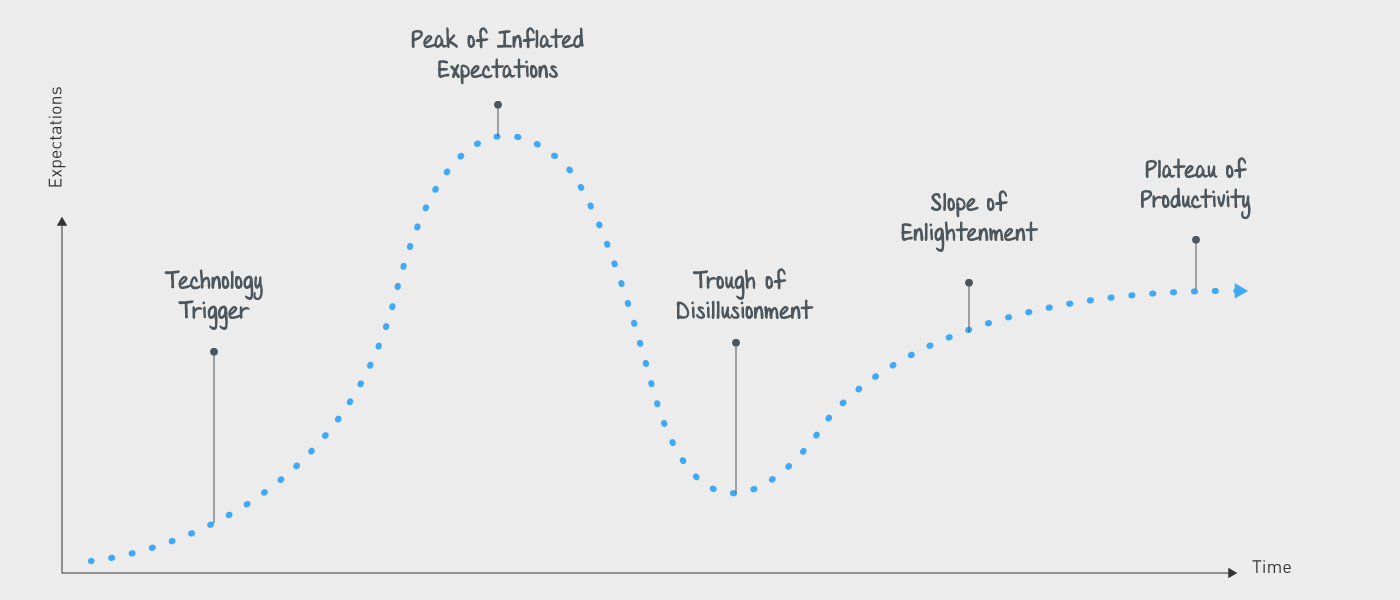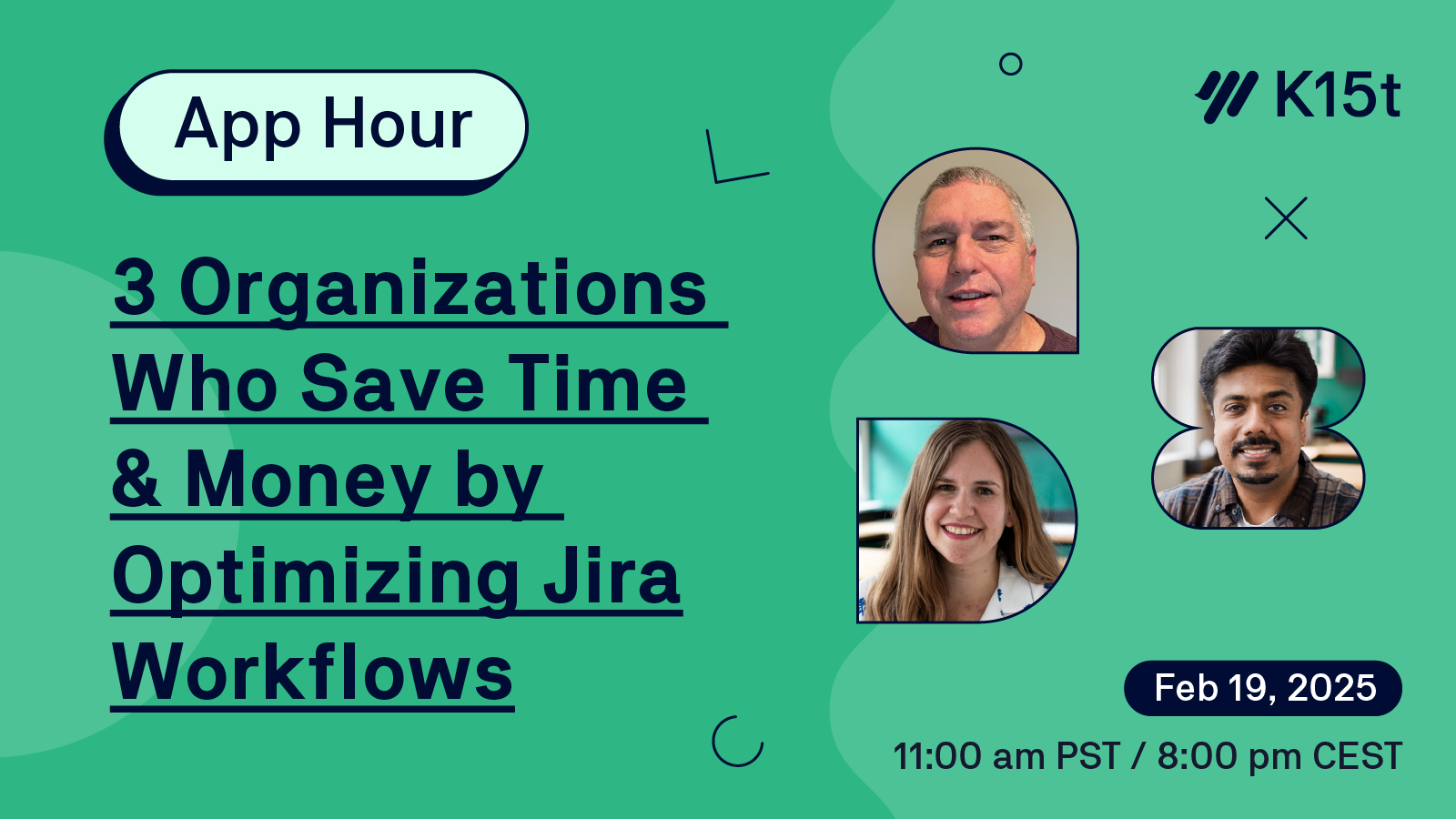6 Reasons Why the Enterprise Wiki Confluence Keeps on Thriving
This post was written by our guest author Martin Häberle, product marketing manager at SoftProject GmbH.
The time of wikis' widespread popularity are long gone – one might even say that wikis have been proclaimed dead. And yet, the enterprise wiki Atlassian Confluence is more popular than ever. Our guest author found six reasons why this isn't a contradiction and may have unearthed the secret recipe behind Confluence's trend-bucking success.
When exciting new technologies are released, they are often hyped to the extreme, rapidly gaining public awareness and building up unsustainable levels of enthusiasm. IT business consultants Gartner have analyzed the hype that has surrounded multiple different technologies throughout their lifecycles, and used their findings to develop the Hype Cycle model. This is what they found: after initially peaking on a wave of public excitement, the hype then always breaks and descends into disillusionment and disappointment. Only once the hype subsides is it possible for the technology to steadily build until it reaches a healthy 'plateau of productivity'.

Gartner's Hype Cycle illustrates the different stages of how technologies are received and adopted
The wiki hype exploded around the turn of the century, promising knowledge for all, willingly provided by everybody. However, by the end of 2008, hardly any of the initial euphoria remained, as it had reached the 'trough of disillusionment' stage in Gartner's Hype Cycle.
Public interest in wikis as a technology greatly diminished and perhaps even the most loyal users were a little disappointed that not everyone wanted to share their knowledge freely. Maybe the wikis back then weren't as quick ('wiki' means 'fast' in Hawaiian) and easy to use as everyone had thought. Even though new wiki projects were still being implemented, wikis as a technology were rapidly losing the tech world's attention.
Even today many outside observers still consider Atlassian Confluence to be just another wiki platform. But this enterprise wiki and the collaborative approach behind it are actually more successful than ever. So what's Atlassian's secret recipe for Confluence? Taking a look at its history offers some insights.
#1 Focusing on Enterprises
Even though the wiki bubble had burst, Confluence's creators still firmly believed in the enterprise wiki idea. They closely examined the needs of businesses, found their niche as a collaboration platform, and developed a solution that perfectly fit in to Gartner's plateau of productivity. Businesses require structuring options and solid permission administration, for example. Atlassian responded by introducing, among other features, spaces – self-contained sub-wikis that can contain as many pages in as deep a page hierarchy as needed. This novel approach was well-received by companies all over the world, and its adoption rate continues to grow steadily.
#2 Social Platform and a Graphical User Interface
Early on, the Confluence team recognized that excellent enterprise wiki technology wouldn't accomplish much on its own. However, social networks were already part of many users' everyday lives – a realization that influenced Confluence's development starting in 2009 with version 3, turning Confluence into a full-fledged social platform with comments, blogs, shares, likes and much more.
Introducing an easy-to-use editor with a graphical user interface (GUI) in Confluence 4 marked another milestone for Atlassian that many believe to be the real innovation. It convinced users that their previous wiki projects just weren't up to par anymore. The new GUI page editor had put such a gap between Confluence and other well-known wikis with complicated formatting code that people were now consequently able to say farewell to wiki markup – a development that some wiki purists/traditionalists never really forgave but definitely made widespread success possible.
#3 Almost Limitless Customization
From 2009 onwards, a fast-growing ecosystem of extensions (known as 'add-ons' in the Atlassian world) became available which centered around customizing and extending Atlassian tool functionality for all kinds of use cases. The first Scroll Exporter by K15t Software was also part of this newly created ecosystem. It introduced exporting options for Confluence content to enable its use as a single source publishing platform. In 2010, Scroll Office followed, making exporting perfectly formatted Word documents based on Confluence pages possible. After lots of enthusiastic feedback from technical writers, K15t Software released Scroll Versions: an add-on that accommodates the special content management requirements of software documentation, e.g. version and variant management.
Thanks to the wide range of specialized Atlassian partners and the continuously growing marketplace, Confluence developed into a full-fledged authoring environment for technical writers, among countless other use cases – and this didn't go unnoticed for long in the tech writing industry.
#4 Complete Adaptability
What if Confluence didn't look like Confluence anymore but rather appeared as a sleek website to users? Add-on developers soon started offering multiple themes on the Atlassian Marketplace that transformed Confluence's appearance. Yet many of these did not push the envelope – they still felt more like Confluence than a modern, standalone site.
In 2013 Scroll Viewport was released – an add-on that allows you to use Confluence as a web CMS (similar to WordPress), separating content creation from its online presentation. Authors are able to keep working in their familiar Confluence interface with all collaborative features native to the enterprise wiki, while the content of certain spaces is publicly presented in its own completely customized look and feel with readable URLs and fast loading times.
It allows authors to use Confluence to maintain all content instead of having to differentiate between Confluence content and 'normal' website content. The website you're viewing now is a good example. Would you have guessed that the blog you are reading is powered by a Confluence system?
#5 Collaboration Instead of Information Silos
According to the experts at Gartner, 2014 was the year of collaboration. A concept that elsewhere would have marked the peak of a hype is a basic principle of Confluence.
In the field of technical documentation, for example, established editorial system developers made a half-hearted attempt to adapt to the collaboration trend by adding certain features they hoped would make their systems also usable to authors without expert XML knowledge. Unfortunately, the results didn't move their complex, well-established component-based systems any further on. Many editorial systems today still leave organizations with isolated knowledge silos without any involvement from team members in different departments.
The old wiki idea however – to easily and quickly collect information in a centralized place, a 'single source of truth', and to continuously develop it together – is more than a feature set, it's a conviction which is being adopted by more and more companies.
#6 Consistently Agile Content Creation
When Atlassian introduced simultaneous collaborative editing to Confluence in 2016, the concept of making simultaneous editing of content by multiple users possible wasn't new. Cloud-based office systems like Google Docs had already successfully introduced collaborative editing years before. However, once again, Confluence focused on the productive use of collaborative editing in companies – to collaboratively write technical documentation, for example.
Simultaneously editing content may be a nice feature for cloud apps, yet only with a platform like Confluence do unexpected possibilities for content creation in agile environments come to light. One exemplary effect is that documentation development can keep up with shorter and shorter release cycles while still guaranteeing high-quality documentation. This is enabled by the instantaneous way that all stakeholders can directly contribute to the content.
Conclusion
The last few years have shown us that wikis as general knowledge collection hubs within companies may be history, but despite this,effective collaboration platforms are actually more alive than ever. In fact, Atlassian Confluence has become part of the standard toolset in small and large organizations, and even large corporations, as techcomm blogger Tom Johnson observes:
"Wikis have become the standard corporate platform for employees to share and publish information. Wikis such as Confluence have largely replaced SharePoint."
Confluence has become the platform of choice for over 35,000 teams worldwide to create, share, and publish information with colleagues, partners, and even clients in real time. Atlassian's secret recipe for Confluence seems to be its versatility, and consistent evolution, combined with its focus on meeting the needs of enterprise users.
What are your thoughts? Are there other key reasons why enterprise wikis like Confluence continue to be successful? Leave a comment with your ideas below.
